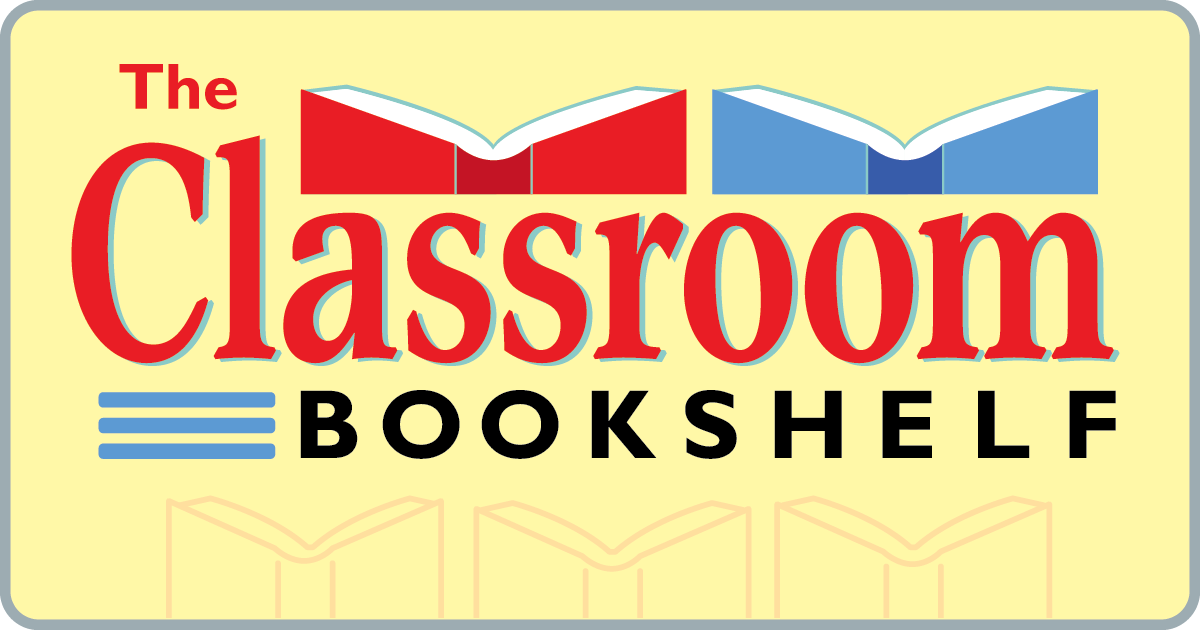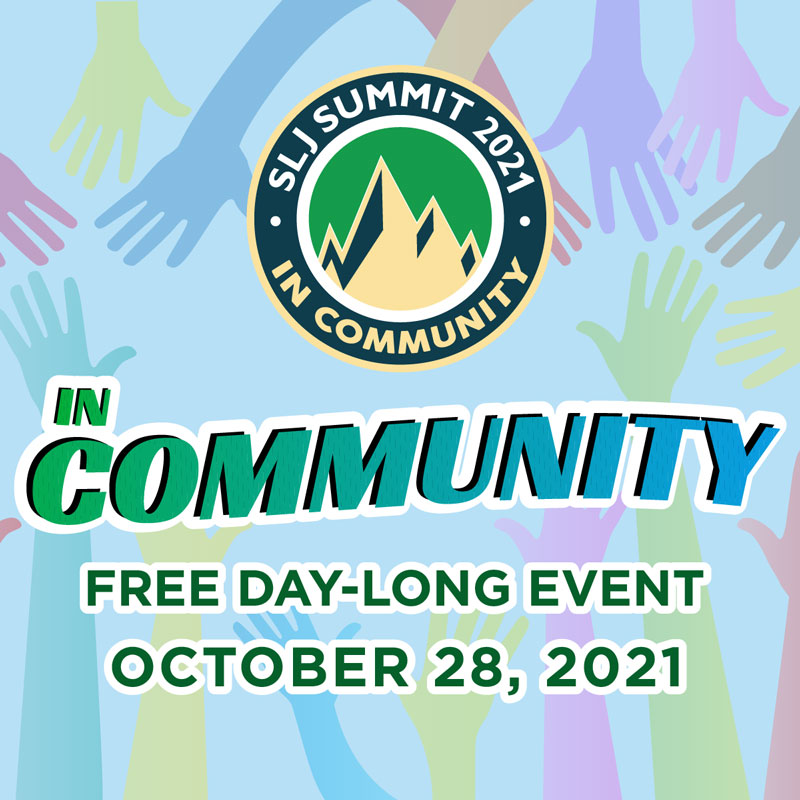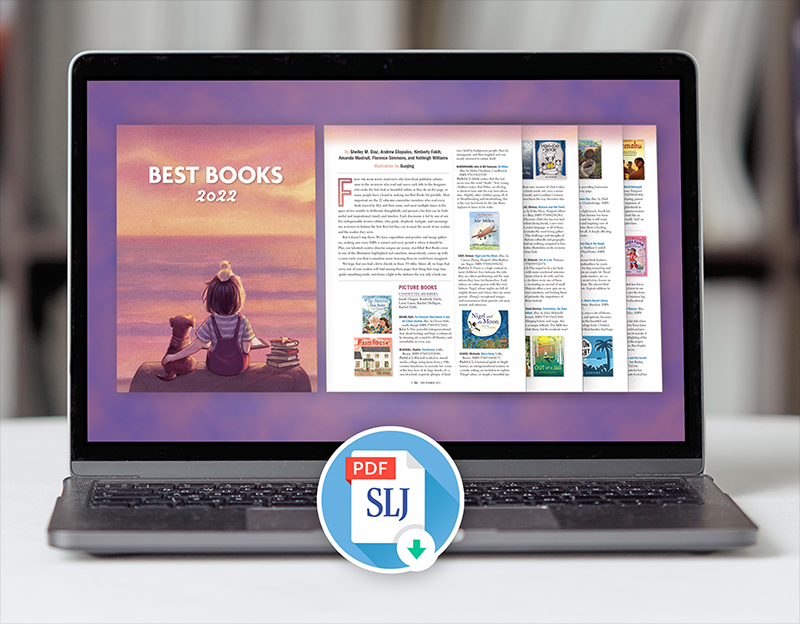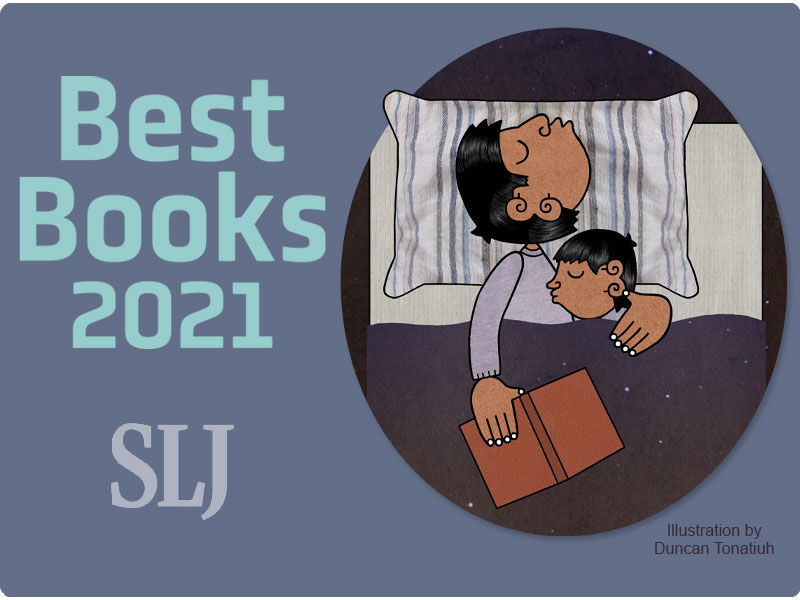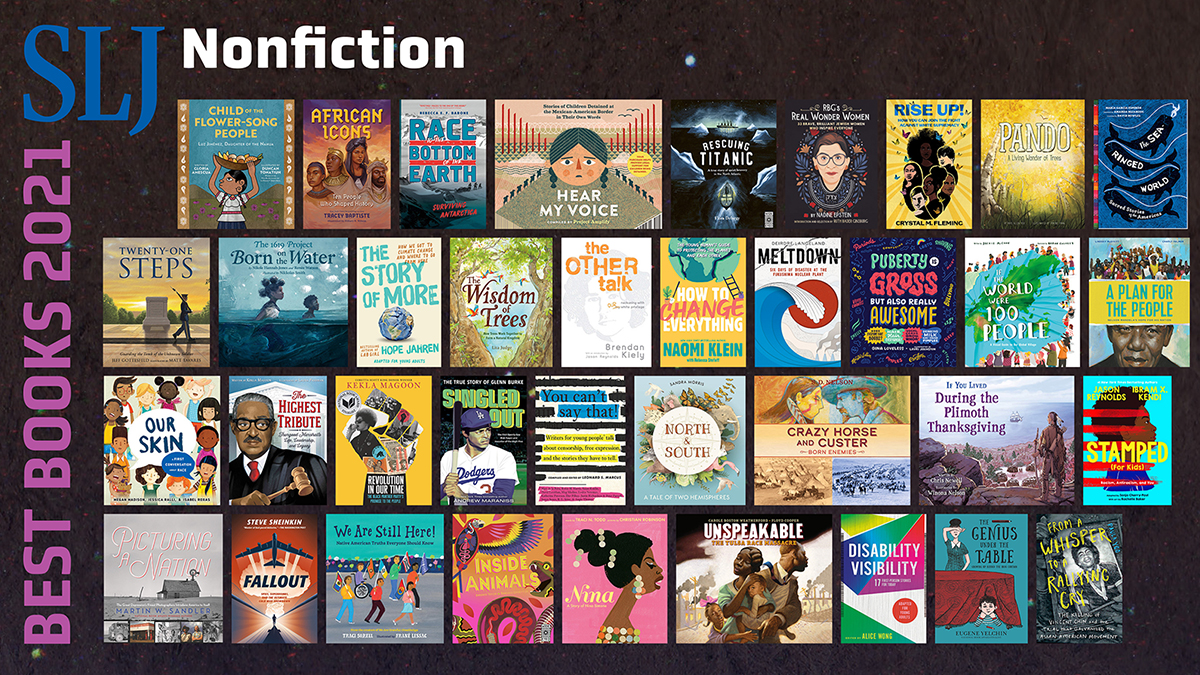Connecting Home and Heart with The Blue House

The Blue House
Written and illustrated by Phoebe Wahl
Published by Alfred A. Knopf, 2020
ISBN #978-1-9848-9336-9
Ages K and up
Book Review
“Home is where the heart is” may be the epitome of cliché, but in The Blue House, author-illustrator Phoebe Wahl illuminates why that sentiment continues to resonate. Leo and his father rent an old blue house, with peeling paint, creaky floorboards and leaky ceilings—“But it was theirs” (unpaged). Wahl emphasizes why the house is a special place to Leo and his father, describing the “hiding places and cozy spaces” inside the house and the bountiful garden outside. Then she fills the house with the stuff of warmth and tenderness: dance parties, pies in the oven, blanket forts, homemade artwork. Around them, however, houses are being knocked down and replaced by large apartment complexes, and soon their landlord announces that their beloved blue house is next to go. Wahl’s honest, but tender writing chronicles the anger, grief, and eventual acceptance that Leo and his father feel about losing the place they called home. But she also infuses hope and love within her storytelling, showing how after they move into another house, “with each passing day, the new house was becoming theirs, too” (unpaged). Wahl’s mixed-media illustrations, saturated with lush color, fill page after page with rich details—some that are tongue-in-cheek–that readers will enjoy exploring. A beautiful commentary on what “home” is, The Blue House offers much for your students to discuss and discover.
Teaching Ideas and Invitations
Grades K and up
Defining Home. What makes something a home? With the help of your school or local librarian, gather a collection of texts that explore this essential question. Share this text set with your students, supporting them to formulate a definition of home and gather evidence as they read. Some texts you might want to share include Kelly Starling Lyons’ Going Down Home with Daddy, Mary Ann Hoberman’s A House Is a House for Me, Yuyi Morales’ Dreamers, Hyewon Yum’s This is Our House, Carson Ellis’ Home, Barbara Kerley’s A Home for Mr. Emerson, and Yamile Saied Mendez’s Where Are You From?. You might also share the animated film Home (Dreamworks). Use these texts to help students compare and contrast what they know a home to be with what these books portray. Then have students work toward a whole-class definition of home.
ADVERTISEMENT
ADVERTISEMENT
Leaving Home. The Blue House tenderly portrays the loss that many children experience when they leave the place they have known as home to live somewhere else. For some students, this may be a powerful, perhaps even traumatic, experience. Support students to share their personal responses and connections to The Blue House, making sure the classroom is a safe and caring space for them to do so. If the class is ready and willing to explore this concept further, share some other books that deal with the topic of leaving home and various reasons why a family might need to do so, such as Phillip C. Stead’s Lenny and Lucy, Mary Hoffman’s The Color of Home, Eve Bunting’s Yard Sale, Patricia de Arias’ Marwan’s Journey, and Francesca Sanna’s The Journey.
Expressive Therapies. Leo and his father turn to music, dance, and art to deal with their feelings about losing the blue house. Invite local music, dance, and art therapists to visit or videochat with your students to explore how these expressive therapy approaches can help people deal work through their emotions and challenges. Work with expressive therapists (perhaps you have some in your school district) to learn techniques you and your students can use in the classroom to deal with any complex emotions they may be facing in their daily lives, particularly if they are related to the COVID pandemic. You might want to incorporate some of these expressive therapy approaches into your teaching on a weekly basis.
Creating Setting. Many consider setting to be simply a time and place, but the The Blue House shows that it is much more than that. Wahl emphasizes the geographical features, plant and animal life, and emotional atmosphere connected to the concept of setting. Have students do close reading of the text to gather descriptions of the setting, both of the house and the surrounding area. Discuss how setting influences character and plot development. Depending on your students’ ages, draw from a selection of texts or textual excerpts that highlight the layers of setting, such as Yamile Saied Mendez’s Where Are You From?, Derrick D. Barnes’ Crown, Juana Medina’s Juana & Lucas, Atinuke’s Anna Hibiscus, Caroline Starr Rose’s Over in the Wetlands, Thomas F. Yezerski’s Meadowlands, and and Claire Vanderpools’ Moon over Manifest. What setting details in those pieces catch their attention? Share these titles with students as mentor texts, and then have your students write or revise a piece of writing to describe a setting in richer detail.
Connecting Color, Emotion, and Mood. Just as authors do with words, picturebook illustrators often use color to evoke certain emotions and a specific mood in readers. Explore the connection between color, emotion, and mood with your students, perhaps beginning with famous artwork to help them develop their skills at analyzing color in this way. Share some picturebooks that specifically explore the power of color, such as Lauren Vaccaro Seeger’s Green, Barb Rosenstock’s The Noisy Paint Box, Peter Reynolds’ Sky Color, and Joyce Sidman’s Red Sings From Treetops. Then have students analyze Wahl’s use of color to communicate and evoke emotion and mood in The Blue House. Extend their skills by having them use specific colors to illustrate and highlight the emotion and mood in one of their writing pieces.
Grades 3 and up
Mood and Tone. In literary terms, mood refers to the overall feeling and atmosphere an author wants a reader to sense while reading a text, whereas tone refers to the attitude an author has toward what they are writing. Tone sets the mood of a text. In short, mood is reader-oriented, whereas tone is writer-oriented. Begin with mood, asking students to share what they felt while reading The Blue House and to identify excerpts of the text that support the mood they named. Then, have students examine the text through the lens of a writer and identify Wahl’s tone. What specific words did she use to express her attitude toward the characters and events of the story? How did she structure her phrases and sentences? What punctuation marks did she use? Gather a variety of texts that show readers different ways that authors play with tone to create different moods for their readers. Invite students to try creating a particular tone and mood, using The Blue House and the other texts you’ve gathered as mentor texts.
Grief and Social-Emotional Learning. Leo and his father grieve the loss of their beloved blue house, going through various emotions identified when someone experiences grief. Explore various responses to grief with your students and have them do close reading to identify moments in the story that correspond with such responses, such as anger, depression, and acceptance. Invite students to role-play those moments, using drama to delve deeper into character analysis. Connect these role-play scenarios to social-emotional learning by inviting students to discuss and role-play productive, supportive ways they could help Leo and his father deal with their grief. Some books you might want to share with students, if appropriate, are Melanie Watt’s Bug in a Vacuum and Elisha Cooper’s Big Cat, Little Cat.
Critical Literacy
Residential Displacement. Leo’s family was most likely not the only one forced to leave their home, given that many houses in their neighborhood were being razed and replaced with large apartment complexes. Often, this practice happens to families with little financial power to keep their homes. What are the pros and cons of residential displacement such as this? Guide students to identify the various stakeholders involved and then research and explore this issue from various perspectives: the property owners, property developers, city planners, neighborhood communities, the families that are being displaced. Who benefits from such residential displacement and how? Who loses and how? Extend these discussions toward concepts of gentrification, affordable housing, and climate migration. Some books you might want to share with students are My Papi Has a Motorcycle (gentrification) and My Seneca Village (displacement, nonfiction). What kinds of displacement has happened or is happening in their own communities? Brainstorm with students ways to take action toward social and economic justice in these matters.
Further Explorations
Online Resources
Phoebe Wahl’s website
Urban Displacement Project
https://www.urbandisplacement.org/
Books
Bunting, E. (2015). Yard sale. Ill. by L. Castillo. Candlewick Press.
Cooper, E. (2017). Big cat, little cat. Roaring Brook Press.
de Arias, P. (2018). Marwan’s journey. Ill. by L. Borràs. Minedition.
Ellis, C. (2015). Home. Candlewick Press.
Hoberman, M. A. (2007). A house is a house for me. Ill. by B. Fraser. Puffin Books.
Hoffman, M. (2002). The color of home. Scholastic Books.
Kerley, B. (2014). A home for Mr. Emerson. Ill. by E. Fotheringham. Scholastic Books.
Lyons, K. S. Going down home with Daddy. Ill. by D. Minter. Peachtree Publishing.
Méndez, Y. M. (2019). Where are you from? Ill. by J. Kim. HarperCollins
Morales, Y. (2018). Dreamers. New York: Neal Porter.
Nelson, M. (2015). My Seneca Village. Namelos.
Quintero, I. (2019). My papi has a motorcycle. Ill. by Z. Peña. Kokila Books.
Sanna, F. (2016). The journey. Flying Eye Books.
Stead, P. C. (2015). Lenny and Lucy. Ill. by E. E. Stead. Roaring Brook Press.
Watt, M. (2015). Bug in a vacuum. Tundra Books.
Yum, H. (2013). This is our house. Farrar, Straus and Giroux Books for Young Readers.
Filed under: Fiction, Fiction Picture Books
About Grace Enriquez
Grace is an associate professor of language and literacy at Lesley University. A former English Language Arts teacher, reading specialist, and literacy consultant, she teaches and writes about children’s literature, critical literacies, and literacies and embodiment. Grace is co-author of The Reading Turn-Around and co-editor of Literacies, Learning, and the Body.
ADVERTISEMENT
ADVERTISEMENT
SLJ Blog Network
The Moral Dilemma of THE MONSTER AT THE END OF THIS BOOK
Cover Reveal and Q&A: The One and Only Googoosh with Azadeh Westergaard
Winnie-The-Pooh | Review
Parsing Religion in Public Schools
ADVERTISEMENT

